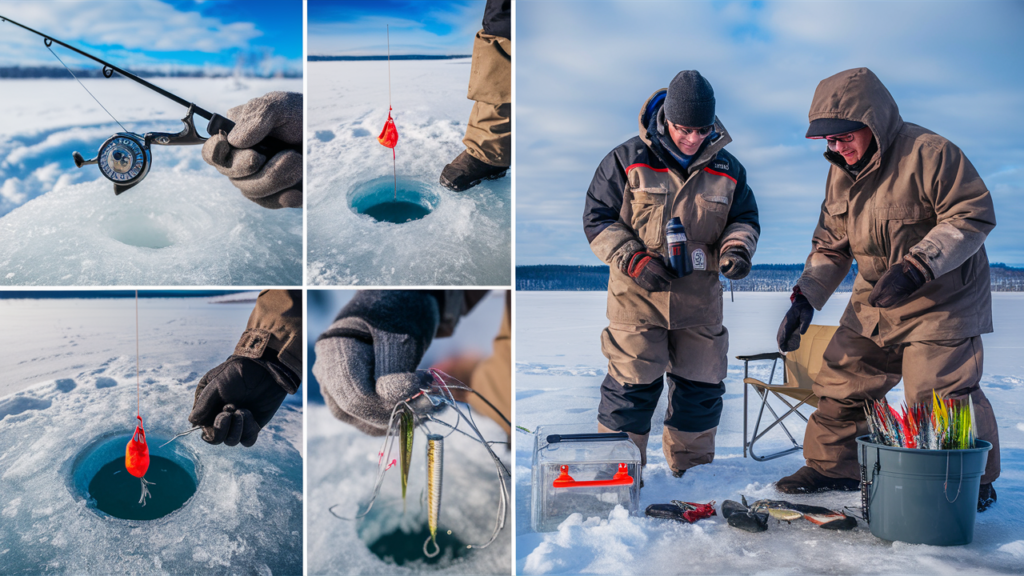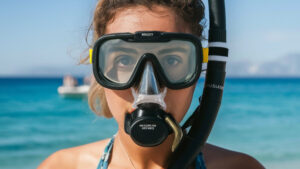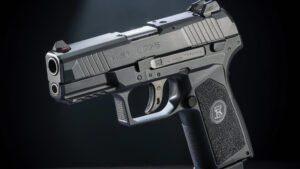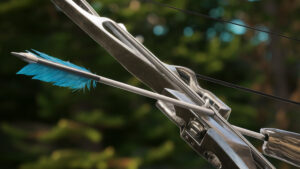To use an ice fishing rod, first attach a reel and line to the rod. Then, bait the hook and drop it through the ice hole.
Ice fishing offers a unique experience for anglers. A specialized ice fishing rod enhances your ability to catch fish in cold conditions. These rods are shorter and more sensitive, designed to detect subtle bites beneath the ice. Understanding how to use them effectively can lead to a more successful outing.
Beginners may find it challenging at first, but with practice, it becomes easier. Familiarizing yourself with techniques and gear will boost your confidence. This guide will help you navigate the essentials of using an ice fishing rod, ensuring you make the most of your time on the ice.
Introduction To Ice Fishing Rods
Ice fishing is a unique experience. It requires specialized gear, especially the ice fishing rod. This rod is shorter and more flexible than traditional fishing rods. Understanding its features will enhance your ice fishing adventure.
The Appeal Of Ice Fishing
Ice fishing draws many people for several reasons:
- Adventure: It offers a thrilling outdoor experience.
- Serenity: Enjoy the peacefulness of frozen lakes.
- Socializing: Share the fun with friends and family.
- Catch Variety: Target species like trout, pike, and perch.
Many anglers find excitement in the challenge of fishing on ice. The beauty of winter landscapes adds to the charm.
Essential Gear: The Ice Fishing Rod
The ice fishing rod is crucial for success. Here are its key features:
| Feature | Description |
|---|---|
| Length | Usually 24 to 48 inches long. |
| Material | Made from fiberglass or graphite. |
| Action | Fast action for better sensitivity. |
| Guides | Fewer guides for easier line management. |
Choosing the right rod can improve your catch rate. Consider the following factors:
- Target Species: Different fish require different rods.
- Fishing Depth: Deeper water needs longer rods.
- Personal Preference: Choose a rod that feels comfortable.
Understanding these elements helps you select the best ice fishing rod. Get ready for an unforgettable ice fishing trip!

Choosing The Right Rod
Choosing the right ice fishing rod is crucial for a successful outing. The right rod enhances your fishing experience and improves your chances of catching fish. Understanding the different types, materials, and lengths helps in making the best choice.
Types Of Ice Fishing Rods
Ice fishing rods come in various types. Each type serves different fishing needs. Here are the most common types:
- Ultra-Light Rods: Best for small fish like panfish.
- Light Rods: Good for medium-sized fish.
- Medium Rods: Suitable for larger fish like walleye.
- Heavy Rods: Designed for big fish like pike.
Material And Build
The material affects durability and sensitivity. Common materials include:
| Material | Features |
|---|---|
| Graphite | Lightweight and sensitive. |
| Fiberglass | Durable and flexible. |
| Composite | Combines benefits of both materials. |
Length And Action
Rod length and action influence your fishing technique. Here’s how to choose:
- Length:
- Short rods (24-30 inches) work well in small holes.
- Long rods (30-42 inches) are great for deeper waters.
- Action:
- Fast action rods are sensitive and good for quick strikes.
- Slow action rods offer more flexibility, useful for larger fish.
Choose wisely to improve your ice fishing success. The right rod makes a big difference.
Setting Up Your Rod
Setting up your ice fishing rod is simple. A well-prepared rod can improve your fishing success. Follow these steps to get started.
Assembling The Rod
Assembling your ice fishing rod is easy. Here’s how:
- Take the rod sections out of the case.
- Line up the guides. They should face upward.
- Insert the rod sections together. Make sure they fit snugly.
- Check for any damage. Look for cracks or breaks.
After assembly, your rod should be ready for the reel.
Choosing The Right Reel
Selecting the right reel is crucial. Here are some popular options:
| Reel Type | Best For |
|---|---|
| Spinning Reel | Lightweight lures and panfish |
| Baitcasting Reel | Heavy lures and larger fish |
| Inline Reel | Vertical jigging |
Choose a reel that matches your fishing style. Comfort and ease of use matter.
Spooling The Line
Spooling your line is important for smooth casting. Here’s a simple guide:
- Start with a clean spool of fishing line.
- Attach the line to the reel’s spool. Use a simple knot.
- Turn the reel handle. Keep tension on the line.
- Fill the spool to about 1/8 inch below the rim.
Check for twists and loops. Ensure the line is straight and tight.
Selecting The Best Lures And Baits
Choosing the right lures and baits is essential for ice fishing success. The right choice can attract fish and increase your catch. Understanding the types of lures and baits helps you make informed decisions.
Popular Ice Fishing Lures
Many lures work well for ice fishing. Here are some popular options:
- Jigs: These are versatile and come in various colors.
- Swedish Pimple: Great for deep waters.
- Rapala Rattlin: Perfect for attracting fish with sound.
- Teardrop Jigs: Ideal for panfish.
- Blade Baits: Effective for larger species.
Natural Vs. Synthetic Baits
Both natural and synthetic baits have their advantages. Understanding these helps you choose wisely.
| Bait Type | Advantages | Disadvantages |
|---|---|---|
| Natural Baits |
|
|
| Synthetic Baits |
|
|
Matching The Hatch
Matching the hatch means using bait that resembles local fish food. This increases your chances of catching fish. Here are some tips:
- Observe the water and look for small fish or insects.
- Choose lures or baits that mimic their size and color.
- Adjust your lure depth to match where fish are feeding.
By matching the hatch, you present a familiar target to fish. This can lead to more bites and a successful day on the ice.
Mastering The Jigging Technique
Jigging is a crucial skill in ice fishing. It attracts fish effectively. Mastering this technique can lead to more catches. Let’s dive into the details.
The Basics Of Jigging
Jigging involves moving your bait in a specific way. Here are the basic steps:
- Choose the Right Lure: Use jigs that mimic local bait.
- Drop Your Line: Lower your line straight down.
- Lift and Drop: Quickly lift the rod, then drop it.
Keep it simple. Fish notice movement. Vary the speed to see what works best.
Advanced Jigging Strategies
After mastering the basics, try these advanced strategies:
- Vary the Jigging Motion: Combine short and long lifts.
- Use Different Colors: Bright colors attract more fish.
- Fish at Different Depths: Change depths to find active fish.
Experiment with different techniques. Each day can be different.
Maintaining Rhythm And Depth
Rhythm is key in jigging. Follow these tips:
| Tip | Description |
|---|---|
| Consistent Motion | Keep your jigging rhythm steady. |
| Watch the Line | Observe line movement for bites. |
| Adjust Depth | Change depth based on fish activity. |
Stay focused. Fish respond to consistent motions. Adjust quickly to changing conditions.
Proper Rod Handling
Using an ice fishing rod correctly enhances your fishing experience. Proper rod handling can improve your catch rate. Focus on grip, sensitivity, strike detection, and setting the hook. These elements are crucial for successful ice fishing.
Grip And Sensitivity
A firm grip is vital for effective rod handling. Hold the rod with your dominant hand. Use your fingers to feel the slightest movement. This will enhance your sensitivity to bites.
- Use a relaxed grip to avoid fatigue.
- Keep your thumb on top for better control.
- Adjust your grip based on the rod type.
Check the rod’s action. A sensitive rod allows you to feel small bites. Experiment with different grips to find what works for you.
Strike Detection
Detecting strikes quickly is essential. Watch the tip of your rod closely. A sudden dip or twitch indicates a fish is biting.
| Strike Type | Tip Movement |
|---|---|
| Light Bite | Small twitch |
| Strong Bite | Quick dip |
| Missed Strike | Quick flick |
Use your eyes and ears. Listen for sounds that indicate activity. Stay alert to improve your chances of catching fish.
Setting The Hook
Setting the hook is a crucial step. React quickly after detecting a strike. Lift your rod sharply to drive the hook into the fish’s mouth.
- Wait for the fish to take the bait.
- Lift the rod smoothly.
- Keep tension on the line.
Practice this technique. It increases your chances of landing fish. Proper hook setting leads to more successful catches.
Maintaining Your Ice Fishing Rod
Proper maintenance of your ice fishing rod ensures long-lasting performance. Regular care keeps your gear in top shape. Follow these steps to maintain your rod effectively.
Cleaning After Use
Cleaning your ice fishing rod is essential after each trip. Dirt and grime can affect performance. Use these simple steps:
- Rinse the rod with fresh water.
- Wipe down the rod with a soft cloth.
- Inspect the guides for any debris.
- Use a toothbrush to clean small crevices.
Make sure to dry the rod thoroughly. This prevents rust and corrosion.
Storage Tips
Proper storage keeps your ice fishing rod safe and secure. Follow these guidelines:
- Store the rod in a protective case.
- Keep it in a cool, dry place.
- Avoid direct sunlight to prevent damage.
- Check for any bends or breaks before storage.
Using a rod rack can help organize your gear. This prevents tangles and damage.
Seasonal Maintenance
Seasonal maintenance is crucial for optimal performance. Follow these steps:
| Season | Maintenance Task |
|---|---|
| Before Winter | Inspect for any wear and tear. |
| During Winter | Keep the rod dry and clean after each use. |
| After Winter | Perform a thorough cleaning and inspect guides. |
Regular seasonal checks prolong the life of your rod. Stay proactive to avoid issues.
Expert Tips For Successful Ice Fishing
Ice fishing can be thrilling and rewarding. Follow these expert tips to increase your chances of success. Understanding ice conditions, fish behavior, and safety precautions is essential.
Reading Ice Conditions
Knowing ice conditions helps ensure safety and success. Here are key points to consider:
- Ice Thickness: At least 4 inches for walking.
- Clear Ice: Stronger than cloudy ice.
- Color Changes: Dark areas may indicate weak spots.
Check local reports for ice conditions. Test the ice with a spud bar before walking on it. Always fish with a buddy for safety.
Fish Behavior In Winter
Understanding how fish behave in winter helps you catch more. Here’s what to know:
| Fish Species | Preferred Depth | Bait Type |
|---|---|---|
| Walleye | 10-25 feet | Live bait, jigs |
| Pike | 5-15 feet | Tip-ups, dead bait |
| Trout | 15-30 feet | Small spoons, jigs |
Fish often stay near structures. Look for underwater features like rocks or weeds. Move your bait slowly to attract fish.
Safety Precautions On Ice
Safety is crucial for a successful ice fishing trip. Follow these precautions:
- Always check ice thickness.
- Wear a life jacket under your coat.
- Carry safety gear like a whistle and ice picks.
- Stay away from cracks and holes.
- Keep a first aid kit handy.
Don’t fish alone. Let someone know your fishing location. Be prepared for emergencies.
Troubleshooting Common Issues
Ice fishing can be fun, but problems may arise. Knowing how to fix these issues helps you enjoy your time on the ice. Let’s explore some common problems and their solutions.
Line Freezing
Line freezing can ruin your fishing experience. Here are some tips to prevent and solve this issue:
- Use a line with low memory: This helps reduce freezing.
- Apply line conditioner: This keeps the line flexible.
- Keep the line moving: Reel in slowly to avoid freezing.
If your line has already frozen:
- Gently warm the line using your hands.
- Try to shake off any ice build-up.
- Reel in carefully to avoid snapping.
Gear Malfunctions
Gear malfunctions can happen unexpectedly. Common issues include:
| Problem | Solution |
|---|---|
| Stuck reel | Clean and lubricate the reel. |
| Broken rod | Use a repair kit or replace it. |
| Snapped line | Re-tie the line or change it. |
Always carry spare gear. This helps you stay prepared.
Dealing With Wind And Weather
Wind and bad weather can make ice fishing tough. Here are ways to handle these conditions:
- Dress in layers: This keeps you warm and dry.
- Use a windbreak: Set up a shelter to block the wind.
- Secure your gear: Use weights to prevent gear from blowing away.
Stay alert to weather changes. Check the forecast before heading out.
Frequently Asked Questions
How Do I Choose An Ice Fishing Rod?
Choosing an ice fishing rod depends on your target species and fishing style. For panfish, a light rod is ideal. If you’re after larger fish, opt for a medium to heavy rod. Consider the rod length as well; shorter rods offer better control in tight spaces.
What Type Of Line Should I Use?
For ice fishing, braided line is often recommended. It has less memory and offers better sensitivity. Fluorocarbon leaders are also great for stealth, especially in clear water. Ensure your line is rated for cold conditions to prevent freezing and snapping.
How Do I Set Up My Ice Fishing Rod?
Begin by threading your line through the guides on the rod. Attach your reel, ensuring it’s securely fastened. Next, tie on your chosen bait or lure. Finally, adjust the drag and test the setup by lowering it into the hole to check for responsiveness.
What Bait Works Best For Ice Fishing?
Live bait like minnows, maggots, or waxworms are popular choices. For species like trout, consider using artificial lures that mimic prey. Experiment with different baits to see what works best in your local waters. Each type of fish may prefer a specific bait.
Conclusion
Mastering the use of an ice fishing rod can significantly enhance your fishing experience. Remember to choose the right equipment and practice your technique. With patience and persistence, you’ll enjoy the thrill of catching fish in icy waters. Embrace the adventure, and make unforgettable memories on the ice.
Happy fishing!








